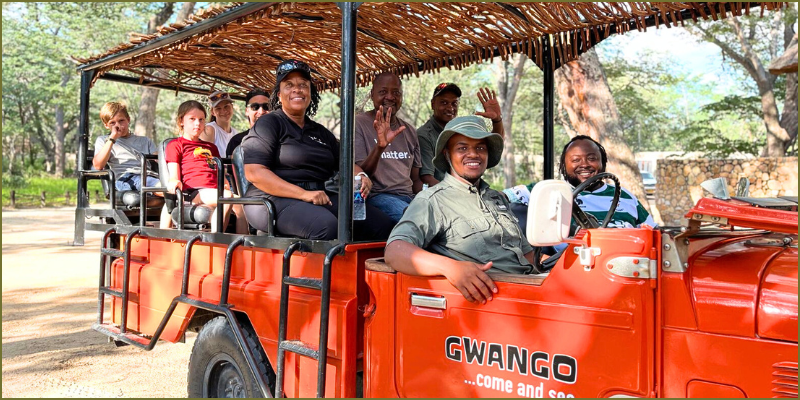Insider tips for traveling with kids in Zimbabwe
Jun 12, 2025
Zimbabwe is sometimes underrated as a travell destination for families. Unsurprisingly for those who have visited with children before, its combination of wildlife, landscapes and cultural sites, does create a sense of adventure that many children seem to really connect with... But like with any international travel, with kids, the experience is smoother when you plan ahead for the practical details. Some few useful tips to keep in mind before you arrive and once you're here can make all the difference.
Visas and travel documents for children
Children traveling to Zimbabwe require their own passports and may also need a visa depending on their nationality. Most travellers can apply for a visa on arrival or online through the e-visa system, but it’s worth checking the Zimbabwe Immigration website ahead of time for the latest requirements (another reason to do this well in advance is that the system can occasionally go down and you don’t want to be caught out at the last minute.)
If only one parent is traveling with the child, be aware that Zimbabwean immigration may request an affidavit of consent (not older than 3 months) from the non-travelling parent. This is especially important for cross-border trips into places like Botswana or Zambia. Always carry a copy of the child’s birth certificate just in case.

Vaccines, health and insurance
For all travellers to Zimbabwe, it’s always recommended to be up to date on routine vaccinations like measles-mumps-rubella (MMR), DTP and polio. Hepatitis A, typhoid and yellow fever (depending on your travel history) may also be advised.
Malaria is present in several parts of Zimbabwe, especially near water bodies or in lower-lying areas. Consult your healthcare provider for guidance on anti-malarial medication suitable for children. Always pack insect repellent and long-sleeved sleepwear, especially during the rainy season.
Travel insurance that includes medical coverage for children is essential. Zimbabwe’s public health services are limited in rural areas and private clinics can be costly without insurance. So keep that in mind.
What to pack for the different seasons
Packing smart makes a noticeable difference when traveling with children. Zimbabwe has two main seasons - dry and rainy - and your packing list will shift slightly depending on when you’re coming.
For the dry season (May to October):
Light layers for daytime and warmer jackets for early mornings and evenings (it gets surprisingly cold)
A hat and sunscreen to protect from strong UV rays
Comfortable walking shoes or sandals
Moisturiser and lip balm, as the air is quite dry
Refillable water bottles (you can always but bottled water, but just in case)
For the rainy season (November to April):
A lightweight raincoat or poncho
Closed shoes that can handle muddy conditions
Extra changes of clothes (especially for young children)
Mosquito repellent (they can be relentless!)
Waterproof bags for electronics, extra clothing, or valuables
Regardless of season, always include a small first-aid kit with child-safe medications for fevers, allergies, bites and upset stomachs. These are not always easy to find once you're away from city pharmacies.

When is the best time to travel with kids?
All seasons are a great time to visit Zimbabwe but the dry season, particularly between June and August, tends to be the most comfortable time for family travel. The weather is cooler and wildlife viewing is excellent, especially around Hwange National Park and Victoria Falls. There are fewer mosquitoes during these months as well and outdoor activities are easier to manage without the added challenge of heat or heavy rain.
If you're travelling during school holidays, December is popular, but it falls within the rainy season. This may sometimes mean shorter game drives and occasional road disruptions, but it can also be a greener, more affordable time to visit.
Where to go with kids in Zimbabwe
Zimbabwe has many places that are family friendly, though some areas are better suited to younger travellers than others.
Hwange National Park: With the right guide, children can enjoy a game drive and learn to spot different animals. Some lodges like Gwango Elephant Lodge have child-friendly safari options that skip long hours and focus on educational fun.
Victoria Falls: A must-see and kids often enjoy the sensory overload that usually include roaring water, misty rainbows and even spotting vervet monkeys near the viewing points. Just stay within the marked trails and keep little ones close.
Matobo National Park: We told you about this one in our last blog. The rock formations here are fascinating for all ages and older children may enjoy learning about San rock art and the cultural history of the area.
Great Zimbabwe: For families with curious school-aged children, these ancient ruins are an excellent opportunity for storytelling, exploration and learning. Here, it’s less about the animals and more about imagination and discovery.
If you’re staying at Gwango, you’ll find that the area is close enough to explore places like Dete, Hwange or even Bulawayo for a day trip. It’s also quiet and safe enough for down days, where the kids can just enjoy open space, fresh air and a slower pace.
